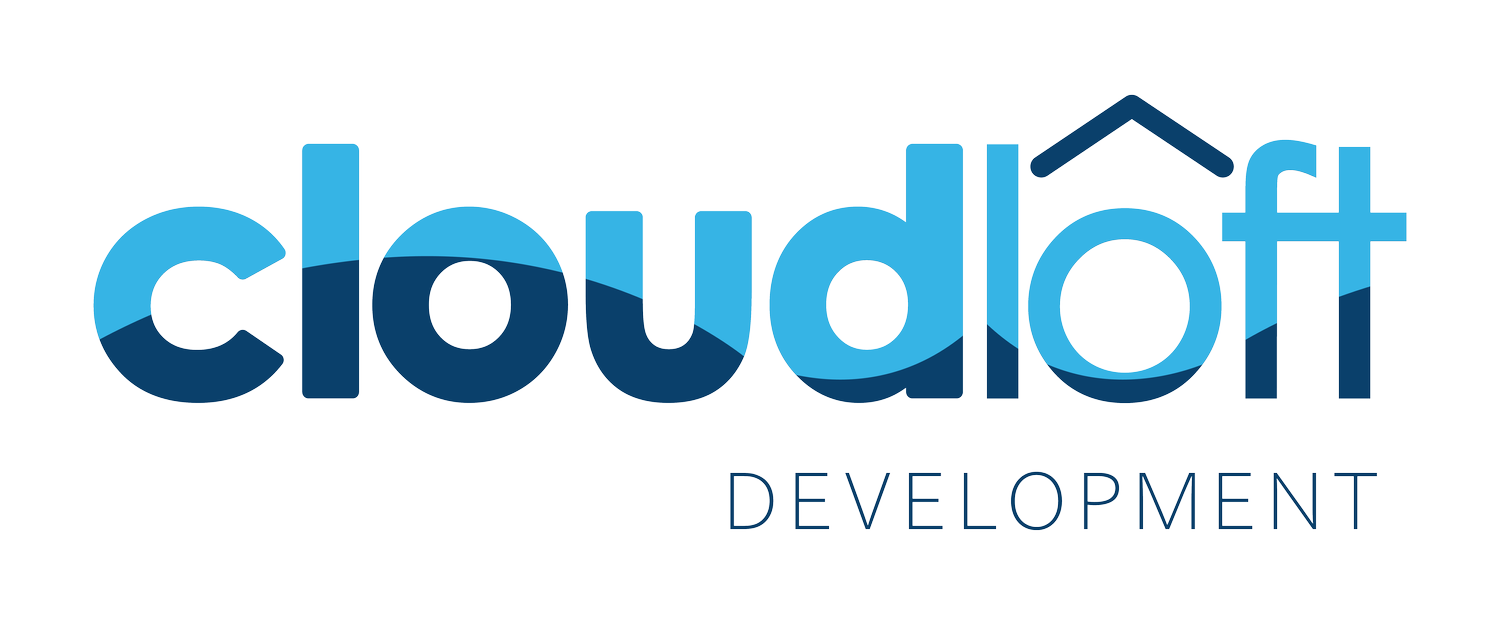
It’s time to make a smart business decision.
Benefits of Ownership
Commercial real estate investing is a well-proven path to build wealth. Cloudloft offers a simple, understandable, and affordable product that allows individual investors access to the rewards of commercial real estate. A Cloudloft investment can help owners realize tax savings, property appreciation, and additional income. It can also give owner occupants a higher degree of control over costs.
Do you intend to occupy or lease out your office condo?
-
Owner-Occupants
Cloudloft Owner-Occupants purchase to satisfy business needs, manage and control access, control expenses, manage contact, reduce occupancy costs, realize rent recovery, benefit from tax depreciation, and capture future asset appreciation.
-
Investors
Cloudloft Buyer-Investors purchase office condominiums to lease for cash flow and profit, and like Owner-Occupants, seek tax advantages, appreciate profits, and gain appreciation over time.

Owners Association services that make your life easier.
-
Common Areas
Maintenance of the common areas such as driveways/parking, sprinklers, roofs, foundations, landscaping, building exteriors, etc.
-
Utilities
Pays the bills to the city (water, sewer, trash/dumpster pickup)
-
Insurance
Covers insurance on the buildings (exteriors) and liability coverage on the common areas around the property.
Commercial Real Estate Investing
By Cloudloft
Cloudloft wants your decision to purchase an office condominium to be based on a solid understanding of the investment process, the opportunities, and the associated rewards and risks. A solid understanding leads to better investment decisions and results. Ultimately, your success as a buyer is our success.
Cloudloft buyers range from first-time investors in commercial real estate to seasoned, repeat investors. Regardless of where you might be, Cloudloft provides support and information designed to assist you with successful real estate investment decisions.
Cloudloft is dedicated to providing you with answers and information. We regularly add and update content. If you don’t find what you're looking for, please let us know.
-
Commercial real estate investing is a well-proven path to build wealth. However, many commercial real estate projects are large and expensive, with very limited or no opportunity for individual investors. Commercial real estate ownership and the associated economics can seem complex and mysterious to many, but it does not have to be.
Cloudloft offers a simple, understandable, and affordable commercial real estate product. It is a proven product and allows individual investors access to the rewards of commercial real estate. A Cloudloft investment is reasonable for an investor to own, manage and monitor.
Cloudloft encourages every investor to consider and gain an understanding of the evaluation, acquisition, and management demands of any real estate investment property. Initial cost can often dominate an investor's focus. The demands of ownership are often more consequential in determining long-term success or failure for an investor. Consideration of property types, location, quality, market drivers and demographics are just a few of the important factors when deciding.
Successful real estate investors look beyond the initial purchase. Cloudloft provides investors with information on occupancy costs, financing options, maintenance considerations, tenant management and a host of related topics.
Cloudloft is committed to making your investment experience understandable and as painless as possible. We are also dedicated to sharing knowledge, information, tools and resources to help you realize your financial, business, and investment goals.
-
Cloudloft Owner-Occupant's purchase to satisfy business needs, manage and control access, control expenses, manage contact, reduce occupancy costs, realize rent recovery, benefit from tax depreciation, and capture future asset appreciation.
Cloudloft Investors purchase office condominiums to lease for cash flow and profit, and like Owner-Occupants, seek tax advantages, appreciate profits, and gain appreciation over time.
-
There are 3 parts of a commercial real estate ownership cycle:
Acquisition – Contract for a specific space by lease, purchase, or exchange
Holding – Long-term financial commitment (rent, mortgage)
Disposition – Sale or lease expiration
-
There are several ways to calculate commercial real estate value. Cloudloft is available to help you with these calculations and variables to consider.
-
Real estate is an alternative to stocks and bonds and is generally considered more transparent, especially with respect to predictable returns and market volatility. It provides a tangible, identifiable asset the owner has full control of.
-
A lease is a legal agreement between a tenant and a landlord for the possession and use of real estate. The lease agreement defines the relationship and specifies the rights and obligations of both the owner and the tenant.
There is not a “standard” lease contract, but the following elements are found in valid lease agreements:
Names of owners and tenants
Description of the property including the street address, legal description, and a recorded plat (a map of a specific land area, conforming to governmental requirements as to format and accuracy, which locates individual parcels of land, or lots, by reference to larger parcels of land, known as blocks and subdivisions, within an area).
Tenant’s rent obligation with escalation provisions and operating expense obligations
Offer and acceptance: Executing the lease confirms the owner’s obligation to lease the property to the tenant under certain terms and conditions; the tenant accepts and agrees to lease the property from the owner under those same terms and conditions.
Note that lease terms cannot avoid or supersede federal, state, or local laws.
-
With real estate ownership, come expenses in the form of repairs or maintenance. It is important that your lease agreement clearly states the obligations of both the Landlord and the Tenant regarding potential expenses.
-
Operating expenses are costs incurred while running a property on a day to day basis. They include things like property taxes, insurance, and maintenance. Capital expenses are longer term in nature and they should be considered an investment. For example, a capital expense could be an investment in a new roof. The cost is realized up front, but the value of the asset is recorded on the balance sheet.
-
Insurance plays a key role in the protection of your investment. There are a number of items to consider:
The various types of insurance that each party must carry and the limits of required coverage.
Defining the rights and obligations of the tenant and landlord in the event that the property is damaged or destroyed. Would the lease be continued or stopped in such an event? What causes would trigger any rights or obligations as well as insurance?
Repairs, relocation, or other steps needed to enable the tenant to continue conducting business.
Insurance, Waivers, Subrogation, and Indemnity.
-
Gross Lease – the tenant pays the owner a gross amount for rent. From this amount, the owner then pays the operating expenses.
Net lease – the tenant pays all or some of the operating expenses. The first net usually obligates the tenant to pay annual property taxes.
In a net-net lease, the tenant pays both property taxes and hazard/fire insurance.
In a triple-net lease (NNN), the tenant is responsible for its proportionate share of operating expenses.
The lease terms should be examined carefully, as the definition of a net lease varies from market to market. Generally, however, a net lease includes property taxes, insurance, and operating expenses.
-
Reasonable assumptions that factor into your rental rate projections are important. Data sources such as LoopNet provide some of the information and are possible sources to confirm general and local market trends. Real estate Brokerages have other data sources that can be a great asset when making rent determinations.
Some of the relevant market information to consider when calculating rent rates:
Population and growth rates
Number of households, household sizes and distributions, and growth rates
Target market analysis
Economic base trends
Comparable rent information (Comps)
-
Owning is a mean to obtaining the full economic use of a property for an unspecified period in the form of an ownership interest. If an owner is also a user, the physical use of the property is obtained as well.
Just as leasing can have distinct advantages and disadvantages, so can owning. Consider the following elements when making the decision to own.
Advantages of Owning:
Tax Savings – the owner of a property is entitled to the tax savings resulting from cost-recovery rules and the mortgage interest expense deduction during the holding period and when the property is sold.
Appreciation – the owner of an asset, a building in particular, is entitled to all of the appreciation in value.
Income – if a portion of the property is rented, income from the lessees can be used to pay the mortgage on the property, fund the owner’s principal business, or be used for other investments.
Control – the user or investor who owns a building has, within the limits of the law, freedom to operate the building as the user sees fit. Controlling the appearance of a site and taking advantage of the prestige of its location may be important to certain businesses. Other owners, perhaps nearing the end of their holding period, may wish to keep expenses low. Ownership also allows some control of costs.
Disadvantages of Owning:
Initial Capital Outlay – down payments to acquire the property may divert cash that could be used to finance the company’s operations or other investments.
Financing – often, an individual’s ability to obtain a loan not only depends on its financial condition, but also on the financial marketplace.
Financial Liability – a mortgage loan or a deed of trust can affect the balance sheet by increasing long-term debt, and the related debt restrictions sometimes required by a lender.
Risks – Risks to ownership include potential damage, obsolescence, and the inability to sell at preferred prices at the right time.
-
The two methods of comparing leasing and owning costs are the Net Present Value (NPV) method and the Internal Rate of Return (IRR) method.
Net Present Value Method – The NPV method compares the NPV’s of the cash flows for each of the alternatives. This method reduces each alternative to its periodic cash flows after tax.
Internal Rate of Return – the IRR method calculates the IRR on the difference between the owning and leasing cash flows. It subtracts the lease alternative’s periodic cash flows after tax from the own alternative’s periodic cash flows after tax, then calculates an IRR of this differential. This yield can be compared to the yield on alternative investment opportunities that may be available, such as investing in the core business.
Investment Return Calculator
NOI/ROE Calculator
Learn if a Cloudloft investment is right for you.
Ready to ask some questions? We really want to hear them. Contact us to start a conversation based around your goals.


